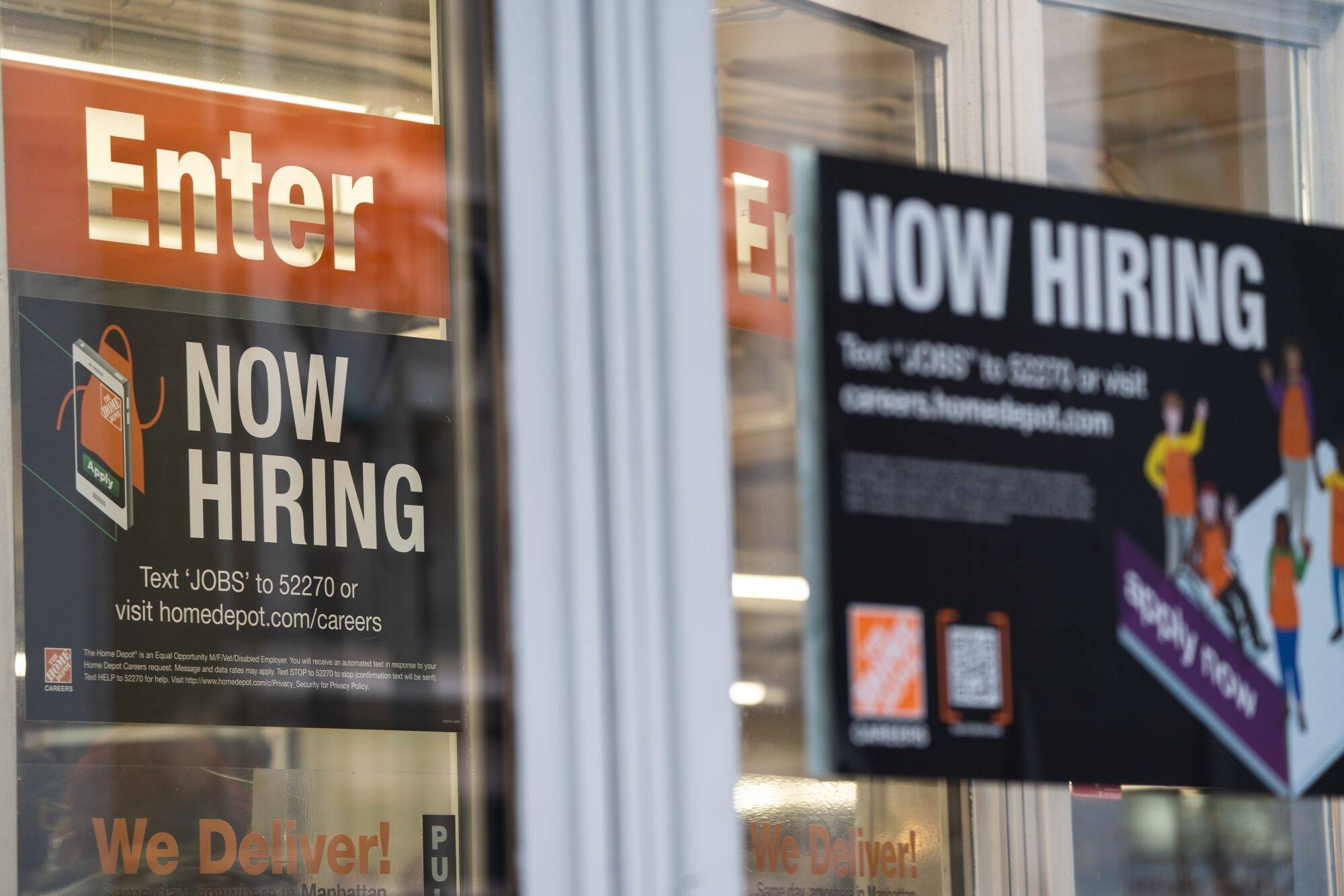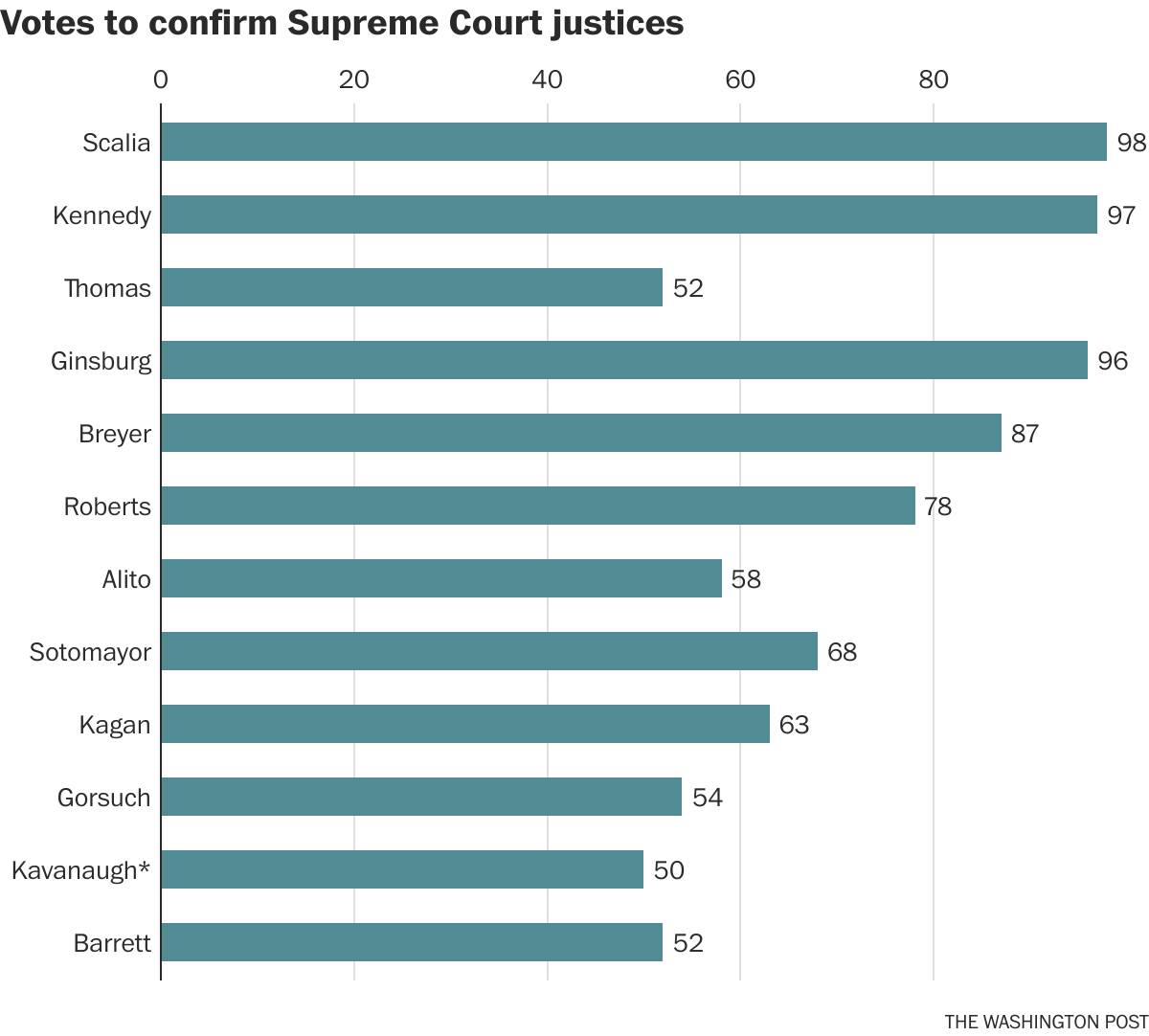| When you hear President Biden talk about the economy, one of the first things he'll say is that wages are up and so are jobs. That's true. According to government job data released Friday, the unemployment rate sits at a low 3.6 percent. (It was 14.7 percent in April 2020 after the U.S. economy shut down basically overnight). The economy has been adding jobs every month for 11 months, which the Wall Street Journal says is the longest stretch going back to 1939.  Signs at New York Home Depot in February. (Jeenah Moon/Bloomberg News) | But groceries and gas and housing cost a lot more. What's going on here? Here are some basic dynamics shaping this up-but-down economy — and, thus, shaping Biden and Democrats' political future in November's midterm elections. - The economy is opening back up after the pandemic. And that means there are more job openings that people are taking, thus lowering unemployment. "Workers are returning en masse," economist Diane Swonk said. "Instead of a Great Resignation we are seeing workers able to better match their skill and wants to jobs, and with that improving their economic outcomes with wage gains and flexibility they value."
- There's a high demand for workers. As jobs come back online, there aren't enough workers to fill them. "Aging, the souls lost to the crisis, long covid, mental health issues and a sharp drop in immigration have all dramatically reduced the supply of workers," Swonk said. That helps drive up wages as employers try to attract workers.
- The flip side of all this growth (and record government spending) is record-high inflation. That means as workers get their jobs back, with higher wages, more of their dollars are getting eaten by higher costs of living. Swonk says she sees more workers balancing multiple jobs in the labor market, which she said is a clear sign for how rough it is out there right now for many low-income workers.
Then add to it all the fact we're still in a pandemic and there's a war in Europe, and you start to see how tangled this economy is. "It's good news that we're coming back," Swonk said. "It's bad news that the road to recovery and healing is littered with potholes." How Ketanji Brown Jackson's partisan confirmation compares with recent history By the end of this week, the Senate could confirm the first Black woman to the Supreme Court. It's looking as if Judge Ketanji Brown Jackson will be confirmed with only a few votes more than the majority she needs to get on the court, a tally in line with President Donald Trump's three Supreme Court nominees. Here's how her confirmation compares with recent history, going back to Antonin Scalia's confirmation in 1986.  The number of Senate confirmation votes Supreme Court justices received, going back to Antonin Scalia in 1986. (Kevin Uhrmacher/The Washington Post) | Making these Supreme Court confirmations all-out partisan battles is the new normal, and it's a drastic departure from the previous normal. Scalia had been the most celebrated justice on the right. He got 98 votes in his 1986 confirmation. The most celebrated justice on the left, Ruth Bader Ginsburg, got 96 votes in 1993. Ohio's contentious Republican Senate primary, explained Voting starts today in one of the most contentious races of the 2022 election season: a Republican primary for a U.S. Senate seat from Ohio. Here's more about the race, which is constantly grabbing headlines in politics because of the outrageous things some of its candidates are saying. How the Ohio GOP Senate primary got to be so competitive: Sen. Rob Portman (R), surprised many when he announced last year he wouldn't run for reelection. That created a rare opportunity for Republican politicians to run statewide in a state that Trump won twice. How it's getting so contentious: One of the top candidates, former state treasurer Josh Mandel, straight-up said this: "I believe the election was stolen from Donald J. Trump." (It wasn't.) Another, author J.D. Vance, has the endorsement of Rep. Marjorie Taylor Greene (R-Ga.) and said she did nothing wrong speaking at a conference organized by a white-supremacist Holocaust denier. Another, businessman Mike Gibbons, has falsely said millions more people voted in the 2020 election than were registered. He and Mandel seemed close to a physical fight at a debate last month. Why it's getting so contentious: Perhaps the race is a reflection of the Republican Party of 2022. While Republican strategists in Washington complain to reporters about how ugly the race has gotten, these Ohio politicians are catering to what their voters want to hear, such as false election claims. They're also speaking to another audience: Trump hasn't endorsed anyone yet, and these candidates are all trying to out-Trump one another to get his endorsement. Will Republicans win the seat in November? Ohio isn't a top target for Democrats, because of its recent rightward lean. But Rep. Tim Ryan is running on the Democratic side, and if Republicans nominate a far-right candidate, this race could be competitive. | 





No comments:
Post a Comment